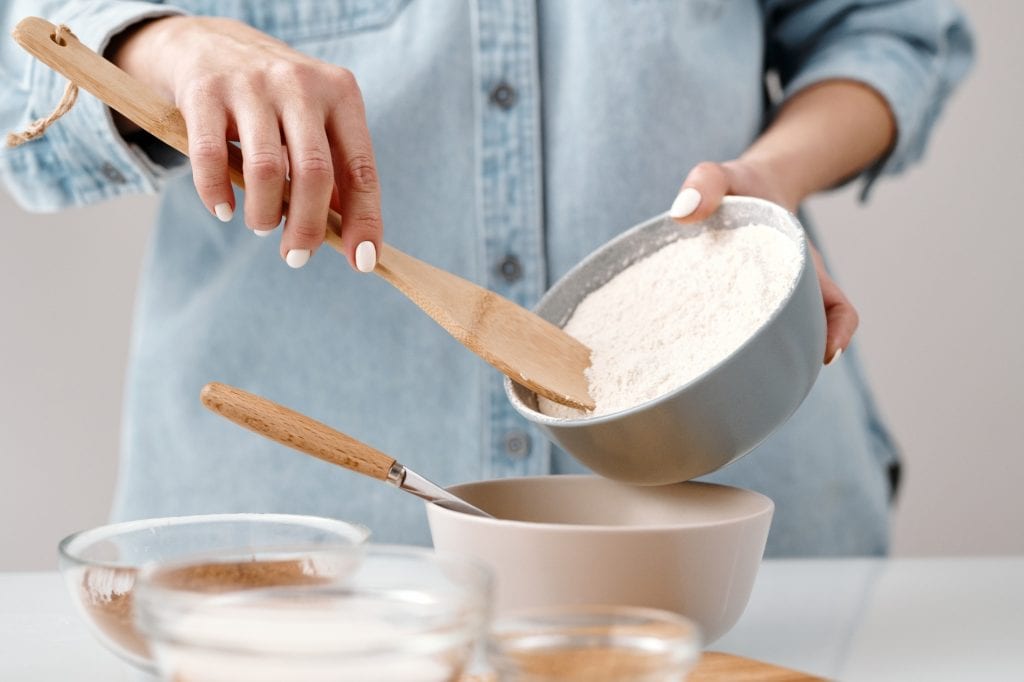
When making your soft, homemade white bread recipe, you wouldn’t usually be reaching for high-gluten flour as your main ingredient. Chances are, you’ll most likely go for either bread flour or the more common all-purpose kind. Some might argue that these two flours provide a better texture and consistency for regular bread. However, this isn’t entirely true.
Essentially, bakers will use different types of flour for specific baked goods. As a rule of thumb, keep in mind that the type used for fluffy pancakes won’t work for chewy bagels since it won’t be able to rise properly and hold its structure (and vice versa). And this is where high-gluten flour comes in!
Read on to find out everything about this ingredient’s characteristics and the many ways to use it. In the end, you’ll definitely know the answer to the question of what’s the best flour for bread.
What Is High-Gluten Flour?
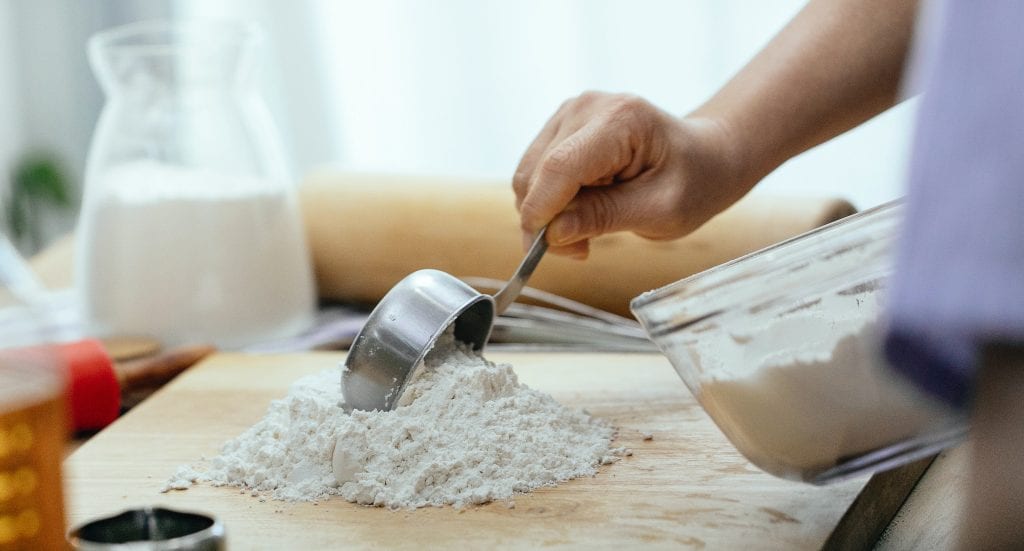
To answer this question, you should first understand that carbohydrates (or starch) and protein are the main components of flour in general. Types like whole-wheat flour have substantial amounts of fats, too.
You can categorize flour into two, depending on how much protein it contains. Strong flours have high concentrations of protein, and they tend to produce bread that is chewier and stretchier than average. Meanwhile, soft flours used for baking delicate cakes and pastries have low protein content overall.
In this spectrum, high-gluten flour falls under the strong flour category. In fact, it has a protein content of 14 to 15 percent, which is the highest among the most common types of flour. Because high-gluten flour contains a lot of gluten-forming protein, it produces a flexible dough and bread with a chewy texture.
READ ALSO: Tapioca Flour vs. Tapioca Starch and Their Best Substitutes
What Is High-Gluten Flour Used For?
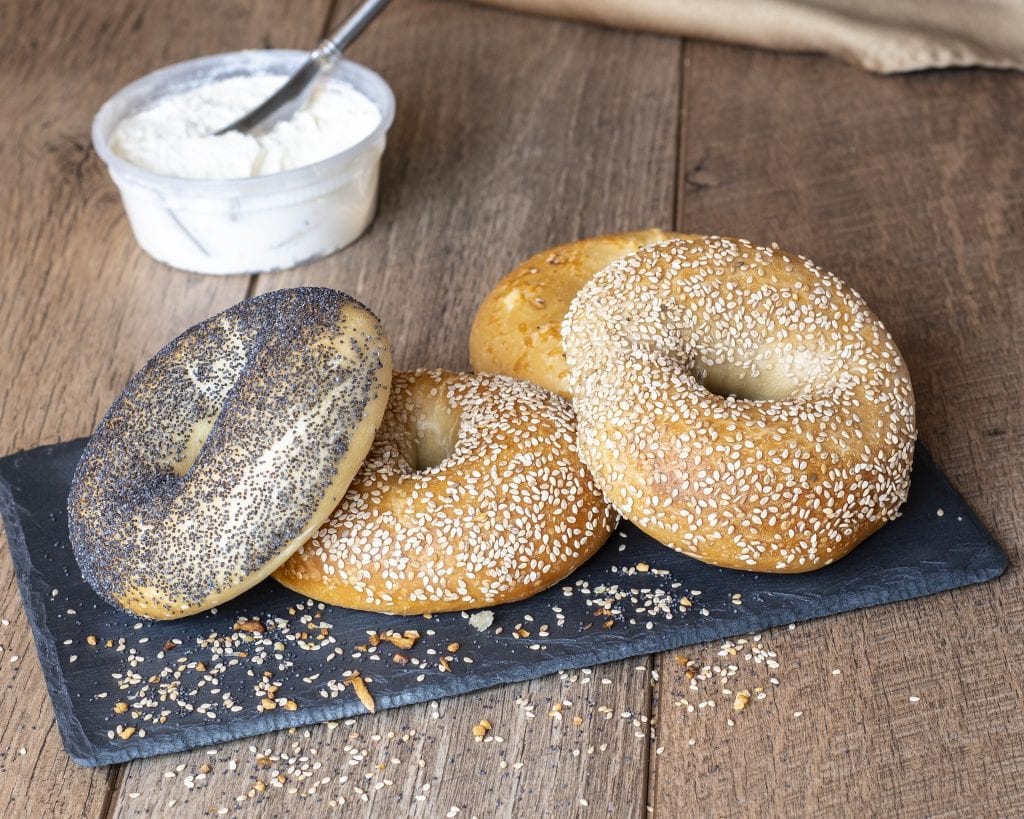
By now, you already know that this baking ingredient produces chewy bread because it’s packed with protein. Aside from that, high-gluten flour dough is capable of holding its shape throughout the baking process. It doesn’t fall apart, and it rises well. You’ll rarely find high-gluten flour recipes that don’t take advantage of this feat.
It’s the best type for baking when you’re making dough for a dense bagel sandwich and other baked goods that require a bit more structural integrity than what a regular all-purpose flour can offer. You can even make a high-gluten flour pizza dough recipe with this ingredient!
This specific flour is also a popular choice among professional bakers for making artisan bread since it carries a sizeable amount of essential amino acids for the Maillard or “browning” reaction to take effect. Besides baguettes, take your pick below for a high-gluten flour bread recipe to try:
- Limpa Bread – Use high-gluten flour to bring together this sweet and aromatic rye bread from the isles of Scandinavia.
- Sunflower Almond Wheat Bread – Stir together sunflower seeds, high-gluten flour, and whole wheat flour for a floral and nutty baked good.
Working with this ingredient requires a bit more water and patience than usual. It takes more time for the high-gluten dough to come together. It has more broken starch granules, so you’ll be kneading it longer than regular bread flour dough. Fermentation takes longer too, but the end product is always worth the effort.
High-Gluten Flour vs All-Purpose Flour
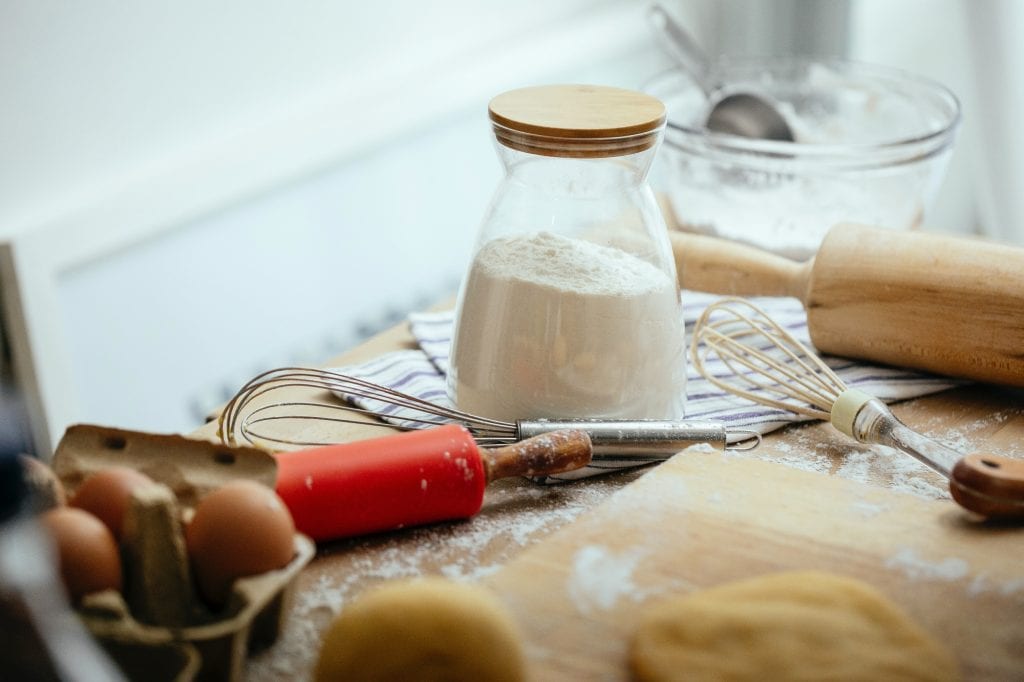
All-purpose flour, also known as AP flour, is arguably the most popular and most accessible out of all the types of this baking ingredient. It’s the best every day powder for bakers and non-bakers alike. In fact, all-purpose is probably the kind of “plain flour” that you’ll most likely have in your pantry. The difference between bread flour and all-purpose flour is that you’ll often use AP flour for things other than baking, hence its name. For instance, you’ll typically find it as part of the breading process in a crispy fried chicken recipe.
But what exactly is all-purpose flour? In the spectrum of soft and strong flours, all-purpose falls smack dab in the middle. Compared to the high-gluten flour protein content that is 14 to 15 percent, AP flour averages at 9 to 12 percent which is more neutral.
That being said, dough made with this ingredient won’t hold its shape as well as dough made with the high-gluten kind. Unlike the latter that expands upward, an all-purpose flour tends to spread outward during the baking process. For this reason, it’s generally best for fluffy pancakes, waffles, and other quick bread and dough recipes that use baking soda or powder as leavening agents. You can even combine it with cornstarch to use it as a cake flour substitute! Similar to high-gluten, all-purpose is also available in bleached and unbleached flour variants.
Can You Use It as a High-Gluten Flour Substitute?
All-purpose flour is a possible high-gluten flour substitute, although you can expect that the bread won’t come out entirely the same. Because it has less protein, your baked good will come out lighter in color and flatter in shape. Simply add one tablespoon more of AP flour for every cup of strong flour that a recipe requires. By doing this, you’ll be increasing the amount of protein in the dough for better structural integrity.
READ ALSO: 28 Easy Dessert Recipes You can Bake Without Visiting A Bakery
High-Gluten Flour vs Bread Flour
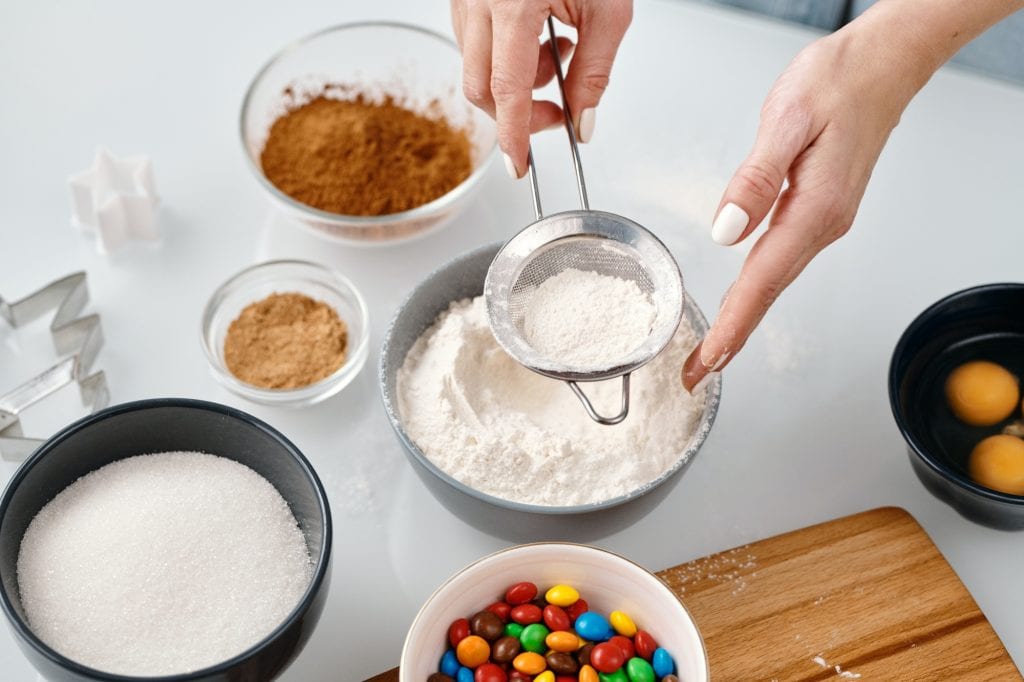
What is bread flour and how does it differ from the two previous kinds mentioned in this article? True to its name, bread flour is the best choice for making regular bread. Similar to high-gluten flour, it’s made from milled hard red wheat of the spring or winter variant.
In terms of appearance, it’s easy to distinguish bread flour vs all-purpose flour from each other since the former is coarser and a bit more cream-colored than the latter. Manufacturers often sell this type as unbleached flour, however. It’s also common practice to condition it with ascorbic acid to increase its amount.
This baking ingredient falls under the hard or strong bread flour category. It has a protein content of 12 to 13 percent, which is in between that of high-gluten and all-purpose flour. Since it contains a good amount of this gluten-forming substance, you can best use bread flour for making traditional yeast loaves, regular pizza crust, and rustic hearth bread recipes. During the baking process, it does a good job at holding its shape and it rises well instead of spreading outward.
Is Bread Flour a Good Alternative?
Yes! Compared to all-purpose flour, this baking ingredient will offer a better rise, a chewier texture, and a more stable structure to your goods. In the same vein, you can also use high gluten as a bread flour substitute.
However, you should keep in mind that using an alternative won’t yield the exact same end-product as the original. Since the amount of gluten-forming protein is lower in bread flour vs high-gluten flour, it won’t entirely match the chewiness, recoil, and flexibility offered by the latter flour type.
READ ALSO: Top 10 Flour Sifters For Your Home Baking
High-Gluten Flour vs Whole Wheat Flour
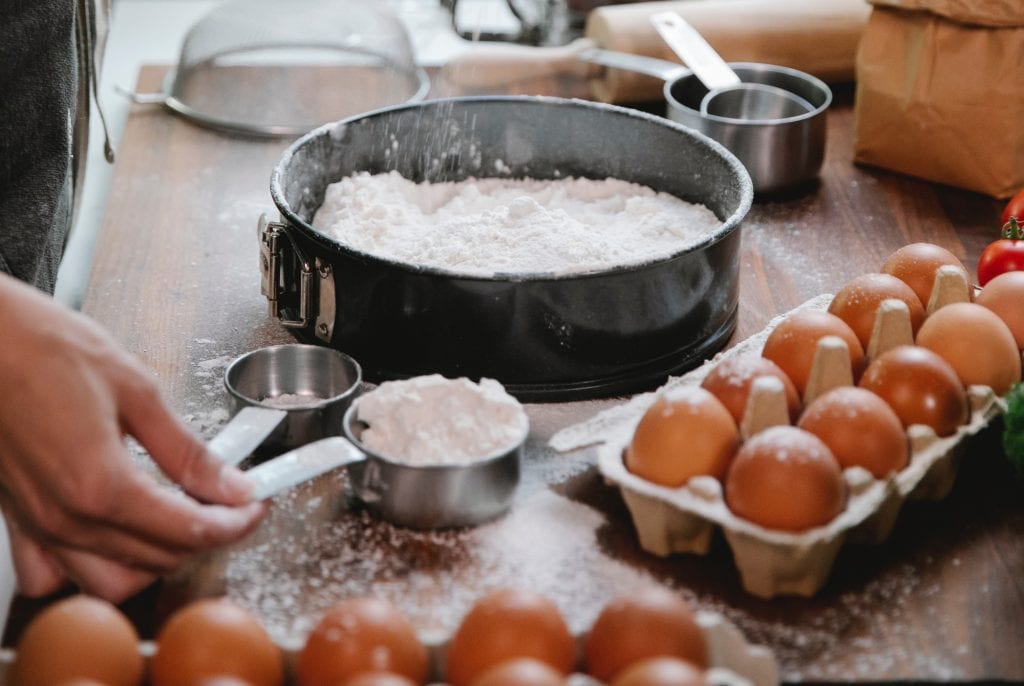
Whole wheat flour, also known as wholemeal in the UK, is another hard flour type. With a protein content of 14 percent, it falls in between high gluten and bread flour. Similar to the other two, the substantial amount of gluten in this type offers a more stable structure. It also imparts a brownish color to baked goods. Whole wheat’s nutritional value and its distinctly nutty taste set it apart from other flour types.
If you didn’t already know, whole wheat bread is a popular option among dietary fiber enthusiasts. It’s also rich in protein, as well as essential vitamins and minerals! This is largely thanks to this baking ingredient’s unique production process.
Unlike other strong and soft flours, this one is made with whole grain. To make whole wheat flour, red wheat is hulled and milled along with the brans (outer layer of the kernel) and germs of the kernels (reproductive part).
Can You Replace High-Gluten Flour With Whole Wheat?
Although whole wheat contains almost the same amount of protein as high-gluten flour, it isn’t as elastic and stretchable as the latter. The bran in whole wheat flour cuts the gluten strands in the dough, making it less flexible. When working with this baking flour, it’s common practice to blend it with all-purpose flour to improve its texture.
You can try using this to blend as an alternative to high-gluten flour, but you’ll likely end up with a denser and more wheat-forward loaf nonetheless.
Also, keep in mind that this flour type tends to have a shorter shelf-life, so it’s best not to store whole wheat in your pantry. If you plan on making hearth loaves, we recommend only purchasing the amount of flour you need for the time being.
High-Gluten Flour Gives Bread Better Structure
So, is high-gluten flour better than the other kinds for baking bread? The answer to this question largely depends on the type of bread you’re making. It will also depend on what texture you’re trying to achieve. If you’re whipping up chewy bagels or artisan bread that has to hold its shape, then using high-gluten flour is definitely the way to go.











